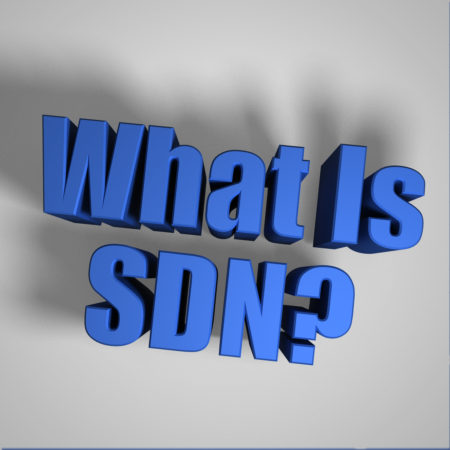 Software defined networking (SDN) is a business practice that can be difficult to understand. In fact many businesses may not even fully know the best practices and the best way to implement this emerging network option.
Software defined networking (SDN) is a business practice that can be difficult to understand. In fact many businesses may not even fully know the best practices and the best way to implement this emerging network option.
The way forward then is for a business to research and get to grips with SDN concepts before considering implementing it within the enterprise. In an effort to aid you and your business here’s a quick guide on how to adopt SDN within your business infrastructure.
What is SDN ?
?
Let’s define this concept as simply as possible and build from there. So, SDN is a networking option where control is taken from tangible hardware and passed to a software application dubbed a ‘controller.’
In application SDN ensures that when a packet arrives at a switch in a traditional network, inbuilt technology sends the switch to its correct or desired destination. After this the switch will continue to relay every packet to the same place along the same route. The switch treats everything equally and no packet is less worthy or more worthy than another.
There is an ‘upgrade’ to the switch that businesses can consider but it’s fairly expensive. These better switches can recognize different types of packets and it will treat them differently.
Benefits of a Software Defined Network
A good place to start is by understanding how a SDN could change your business infrastructure. A SDN will help a business in application as it’ll let network engineers and administrators respond quickly to changing business requirements.
It allows a business to provide administrators with a centralized administrative control console. It frees up employees in general and it ensures that an administrator won’t need to interact with individual switches. The administrator has complete control over the network and they can alter any switch’s rules when required.
Networks are under increased pressure
 With the proliferation of mobile devices, BYOD, social media usage, and Big Data analytics, business networks are under increased pressure. A business’ infrastructure needs to embrace increased bandwidth and the IT department is required to reduce latency and deliver good performance for cloud-based services.
With the proliferation of mobile devices, BYOD, social media usage, and Big Data analytics, business networks are under increased pressure. A business’ infrastructure needs to embrace increased bandwidth and the IT department is required to reduce latency and deliver good performance for cloud-based services.
This is why SDN is important as it can address and provide solutions for all of the above. SDN is maturing too so businesses really need to consider it alongside all of the benefits.
How does a business implement SDN?
Although companies like Google and Facebook have enjoyed notable success with SDN practices there are still a number of roadblocks for the generic business before SDN can be implemented effectively.
However much research and work has been done to identify the problems and find solutions to them. The mix of open source software and commodity hardware that defines SDN marks the potential out as being unprecedented in terms of efficiency and operational agility.
There is huge scope for this technology but it’s unlikely to be fully implemented quite yet. Having said that, technological innovations move at a very fast rate so it’s still worth looking into how to implement this infrastructure upgrade successfully.
Support from industry leaders
For any new technology or innovation to survive and ideally thrive it has to have the backing of big players. This is true for SDN and currently both Cisco and VMware are battling it out. This ensures that further development of this technology will occur so now is a good time to at least start considering SDN.
The next steps with SDN
 So you feel that your business is ready to implement SDN and it’s time for the next steps. Firstly it’s worth noting that there are plenty of problems that your business is likely to encounter but this is normal – work through them.
So you feel that your business is ready to implement SDN and it’s time for the next steps. Firstly it’s worth noting that there are plenty of problems that your business is likely to encounter but this is normal – work through them.
The implementation of a SDN is not as simply as pressing a button – in actuality it’s a really difficult process and it involves teaching data centre teams how to work in this new environment. SDN is a practice that crosses disciplines and it’s not something that your employees will understand immediately or innately.
As the implementation of SDN takes time it’s worth using that time to plan carefully. A business can consider all of the potential pitfalls and have strategies in place prior to SDN being implemented. Really a business would do well to only implement SDN practices in places that would actively benefit from them, but a business should also be prepared for the day that SDN becomes an industry standard and every business practice runs through it.
SDN has marked benefits for a business in terms of productivity but the implementation in terms of wide scale adoption will take time. For now a business should consider testing out these new practices and principles on specific business projects and tasks. From there it’s not hard to up scale.
SDN distinguishes a business from its competitors and early adoption likely means a better understanding of SDN practices in the future. A SDN network can save a business money and time, increase productivity and ensure that your business is considered as forward thinking.
Photo Credit: moonjazz![]() via Compfight
via Compfight![]() cc
cc
Photo Credit: visionsbycat![]() via Compfight
via Compfight![]() cc
cc


